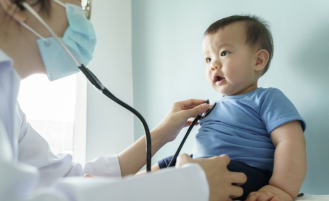UV Safety Awareness Month: Reduce Your Risk of Skin Cancer
July is recognized as Ultraviolet (UV) Safety Awareness Month, a perfect time to highlight the importance of protecting your skin from the harmful effects of UV rays. Overlake dermatologist Margaret Mioduszewski, MD, discusses causes and risk factors for skin cancer, the main types of skin cancer and sun safety tips.
What are some of the causes and risk factors for skin cancer?
Exposure to UV radiation is the leading cause of skin cancer.
Some other risk factors include:
- Having fair skin.
- Being over the age of 50.
- A history of sunburns.
- Arsenic or radiation exposure.
- Having a weakened immune system (from certain diseases or medical treatments).
- Certain predisposing genetic conditions.
What are the most common types of skin cancer?
The main types of skin cancer include:
- Non-melanoma skin cancers (NMSC):
- Basal cell carcinomas (BCC). This is, by far, the most common type of skin cancer. It starts in the lower part of the epidermis. It grows slowly and rarely spreads. Typically, BCCs have a very good prognosis, especially if diagnosed and treated early.
- Squamous cell carcinomas (SCC). This starts in the flat cells that make the surface of the skin. They are more likely than BCCs to grow into deeper layers of the skin and spread.
If diagnosed with a NMSC, a full skin examination should be done every 6–12 months for five years. After five years, an exam is recommended at least yearly for life, according to the National Comprehensive Cancer Network.
- Melanoma. This starts in the skin's pigment cells (melanocytes) in the top layer of skin. Melanoma is much less common than the other types of skin cancer. But it's more likely to grow and spread to other parts of the body.
5 sun safety tips to decrease your risk of developing skin cancer:
- Apply sunscreen daily—even on cloudy days. Broad spectrum sunscreens with an SPF of at least 30 and water resistance are recommended.
- Wear sun-protective clothing and a hat.
- Avoid tanning beds.
- Decrease outdoor exposure during peak hours of UV radiation. Ideally, try to do outdoor activities before 10 a.m. or after 4 p.m.
- Talk to a dermatologist to find out if you have specific genetic conditions that would worsen the effects of radiation exposure.
If you have any additional questions, want to learn how to reduce your risk further, or are concerned about a changing or growing skin lesion, please make an appointment with a dermatologist for a full assessment and evaluation.









